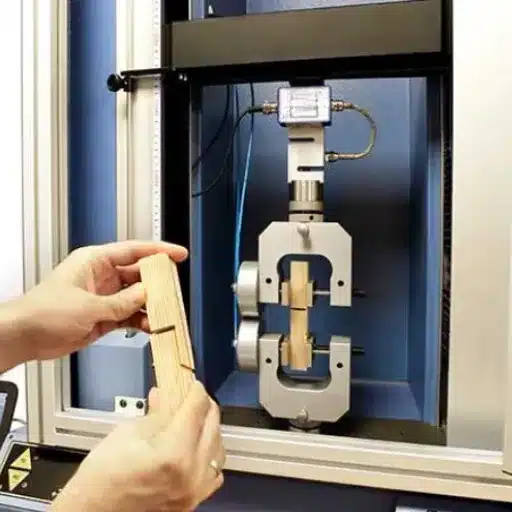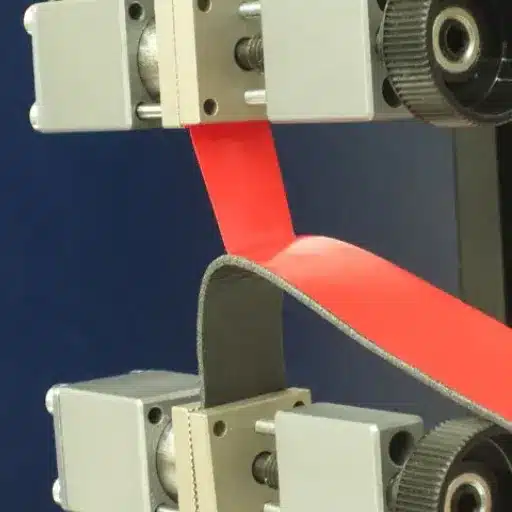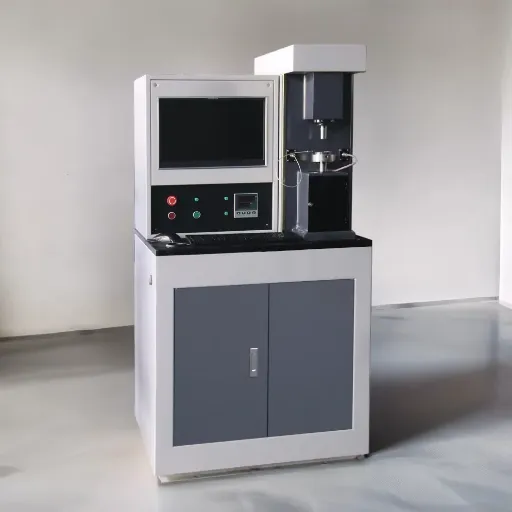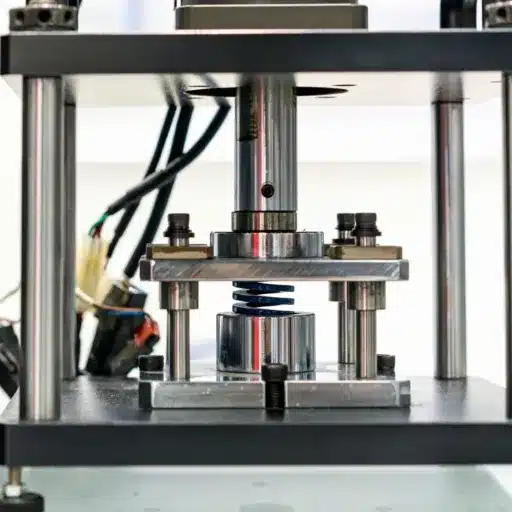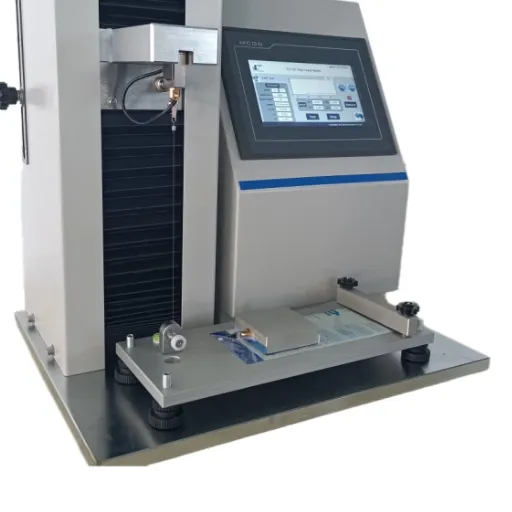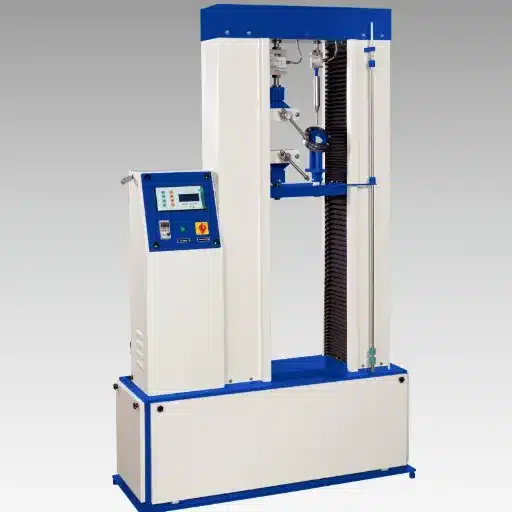Top Bending Testing Machine in China. Bend operations are particularly important in industrial and manufacturing processes where precision is key in forming parts out of raw materials. Like many processes, bend operations come with their fair share of risks. The intricate machinery, high-pressure equipment, and multi-step procedures that are employed in these processes can pose great risks for employees if safety measures are not adhered to. This post aims to bring to the forefront the dangers that are most prevalent in bend operations and recommend vital safety measures to reduce those risks. It does not matter whether you are a seasoned expert or a newcomer; grasping these methods is instrumental in achieving an effective and safe workplace through industrial safety bends practices. Continue reading to understand more about the subject of advanced safety measures in bend operations and discover the protective measures that can be implemented for the workers.
What are the Potential Hazards in Bend Operations?
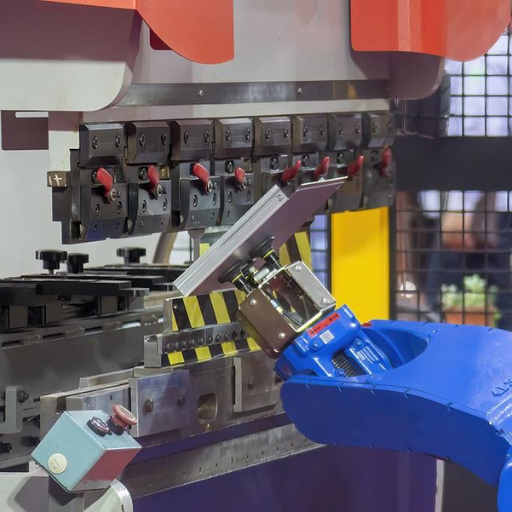
Material Cracking or Fracture – Structural flaws may occur due to the incorrect application of bending techniques which may lead to cracking fractures in materials.
Operational Injuries – Strain, cuts, or bodily harm may occur from the improper adjustment of heavy, sharp materials during bending.
Mechanical Issues – Directly caused by a lack of maintenance, ill-serviced machinery will suffer from breakdowns or accidents.
Mental Exhaustion – Physically and mentally taxing tasks where an individual has to singlehandedly move and repeatedly mimic a series of tasks will lead to extreme fatigue and postural strain.
Gruesome Shredding Injuries – The process of bending certain materials may pose a danger of being pinched or crushed, which can lead to severe injury.
These risks can be mitigated through adequate training and checks of the provided equipment, as well as the adherence to established safety guidelines.
Common Hazard Types in Bending Processes
Bending processes are performed in Bending Shops across variety of sectors, and can be dangerous for employees. Below, with the help of research and data, I explain in detail the range of hazards associated with these processes.
Equipment Problems
Bending processes are highly concerned with equipment failures. As an example, the Occupational Health and Safety Administration (OSHA) cites that over one in five injuries from a manufacturing work site relate to some form of equipment malfunction. Unexpected breakdowns stemming from a lack of maintenance, burned electrical parts, rot, or component wear often lead to physical harm or operational losses. Having sensors with AI systems makes it possible to do something called predictive maintenance. Such technologies, according to many industries, can lower equipment failure by almost 30%.
Manual Handling and Overexertion
Musculoskeletal injuries occur to workers who exert repetitive bending movements, as well as those working with large and heavy materials. Research shows that musculoskeletal injuries are one of the top workplace injuries, and represent a staggering one-third of the injury statistics. Fortunately for us, over a quarter of workplace injuries are in some way associated with overexertion. As a means of reducing these risks and improving safety, job rotation, ergonomic tools, and training on proper lifting techniques can greatly help.
Pinching and Crushing Hazards
The use of press brakes or hydraulic machines involves danger of pinching or crushing when bending processes are being performed. Government safety reports show that such hazards are a result of roughly ten percent of workplace amputation injuries. The risk of inadvertent exposure to space guarded hands free is eliminated through the use of machine guards and light curtains.
Chemical and Heat Exposure
Workers are exposed to extreme heat and chemical fumes in certain bending processes that involve heated metals and lubricants. These fumes pose great risks through burns, rupturing the lungs, and other severe injuries. NIOSH suggests placing ventilation systems, protective shields, and minimizing the time workers are positioned in unprotected territory for the suited holes through which workers enter to do such tasks, to properly mitigate these issues.
Slip, Trip, And Fall Hazards
Incidents of slips, trips and falls are considered to be common in bending machines, these are often caused by congested work areas, spilled oil, and uneven floors. Statistics from the BLS show estimates that indicate these incidents account for 15 percent of nonfatal injuries in industrial ecosystems. Improved standards for housekeeping, anti-slip mats, and clearly defined walkways greatly eliminate such occurrences.
The integration of periodic safety inspections, modern technology, and comprehensive employee training can reduce or even eliminate many of these risks. Besides shielding workers from harm, ensuring workplace safety enhances productivity, satisfaction, and overall operational effectiveness for businesses.
Identifying Potential Hazards Associated with Bending
Bending is a common activity in a workplace and could appear not to cause injury, but in reality, it can pose a lot of risks if not performed properly. Auxiliary actions in ergonomics revolving around bending can cause lower back pain, herniated discs, strained muscles, and other disorders related to the musculoskeletal system. Based on OSHA statistics, approximately 34% of all work-related injuries are related to MSDs which accounts for the Ergonomics Program Signature Injury. Underlining how lacking physical wellness education emergency programs may create serious long-term threats to productivity and economic industries.
Bending forward and staying in the position for a long time or doing it repeatedly can cause excessive force on the spine, especially the lower spine. The spine undergoes twists and turns, making it susceptible to chronic pain or injury over time. Additionally, practitioners performing repetitive bending motions, such as assembly line workers, face chronic pain leading to steep absences. Integrating proper ergonomic adjustments, such as adjustable workstations, along with proper employee training on lifting and bending, can reduce danger by more than 60%, according to research.
Bending tools removal should also be paired with the employment of different technologies. For instance, mechanical lifts, conveyors, and height-adjustable platforms can assist with repetitive bending. Companies are able to enhance productivity and job satisfaction by creating a safer environment through mitigating proactive hazard planning.
Risks of Inadequate Machine Guarding
Improper machine guarding is a risk across industries because it poses life-threatening injuries. OSHA lists violations of machine guarding as one of the top 10 violations every year. Lack of guards or improper guards result in significant risks for employees such as moving parts, flying debris, sparks, or crush points that can lead to limb amputation, fractures or lacerations.
Machine-related injuries accounted for 18% of workplace injuries in the US in 2022, according to the National Safety Council which translates to over 800,000 incidents. These injuries are not only physically painful but also bring financial hardship. Employers face problems with compensation claims, lawsuits, and machine maintenance or investigation work.
In order to address these problems, companies need to place adequate guarding for every machine such as barrier guards or light curtains along with regular checks and maintenance. If employers adhere to regulations, they can solve severe injury risks, creating a safe environment for employees.
How to Implement Effective Safety Precautions in Bending?
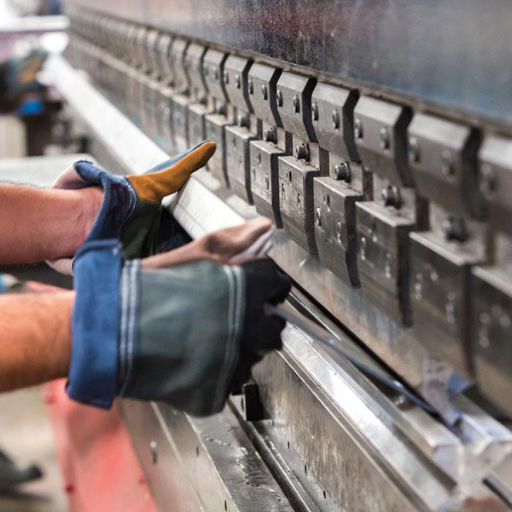
For bending operations to maintain safety, adhere to the following guidelines:
Wear Adequate Protective Measures – Operators should be shielded from injuries and bending machines should be fitted with guards like barrier guards or light curtains.
Have a Training Program – Employees should be trained and taught how to safely operate bending machines, handle materials, and identify hazards.
Conduct Inspection and Maintenance – Regularly inspect machines and ensure maintenance is done so machines run optimally with working safety mechanisms.
Follow Safe Work Procedures – Set basic strategies for handling apparatuses which include donning gloves and eye goggles.
Compliance with the measures above would reduce and avoid risks for all employers and employees involved in bending operations.
Importance of Safety Practices during Bending
Employers should prioritize training courses that encompass the operation of bending machines while adhering to universal safety measures. The adoption of state-of-the-art equipment, which incorporates advanced safety mechanisms such as automatic shut-off switches and emergency stop buttons significantly lowers incident rates. With the proper safety measures in place, operators are 60% less likely to be injured while performing mechanical tasks.
OSHA (Occupational Safety and Health Administration) has publicly stated that workplace injuries are expected to rise about improper machine operation. Machine operation, including tasks such as bending, accounts for nearly 20% of injuries stemming from manufacturing. Given these stats, all industries involved in fabrication and manufacturing must employ robust safety measures to minimize injury rates.
It is clear that bending operations come with considerable risk due to the heavy machinery operated as well as the extreme forces involved. The adoption of proper safety practices should address both the risks of injury and equipment damage. In doing so, employers are able to manage the extreme risks posed by heavy equipment on both employee wellbeing and company resources.
To ensure workplace safety, routine inspections and maintenance checks must also be carried out. Regular maintenance can prevent many accidents that are caused by malfunctioning equipment, which is a common issue. For equipment that is subjected to weekly wear and tear inspections, the possibilities of breakdowns and accidents is greatly reduced. In addition to safety briefings, workers should also be motivated to bring safety issues to attention that can help improve the safety of the work environment.
When adopting new techniques alongside active employee engagement as well as integrating advanced technology, organizations will experience a tremendous reduction in injuries during bending operations and foster a culture that focuses on the wellbeing of the employees.
Using Protective Equipment and Proper PPE
Incorrect use of protective gear and other equipment, or failure to use them entirely, leads to increased risk of accidents in tasks such as bending operations. The OSHA Office of Regulatory Analysis expects that effective use of protective equipment will reduce injuries by roughly 37 percent when compared to the current rates. Though, in most instances, basic protective equipment like gloves, safety glasses, and boots are helpful in minimizing hand, eye, and foot injuries, utilizing safety PPE improves protection.
In addition to personal multi-faceted PPE like anti-vibration gloves and sensors, smart helmets which provide head protection, modern technology has broadened the scope of workplace safety equipment. For instance, smart PPE can measure temperature and impact and will inform workers of potential risks. Adoption of smart PPE worldwide increased by 45 percent over the last five years, according to a 2022 report issued by the International Safety Equipment Association (ISEA), demonstrating increasing acceptance of intelligent safety equipment.
It is just as critical to combine PPE with training. Workers need to be trained on how to use, maintain, and replace their tools of equipment properly. As the National Institute for Occupational Safety and Health (NIOSH) reports, workplaces with repetitive training sessions on PPE have 25% fewer injuries than those with no training. The backbone of safety at a workplace comes from the use of devices in conjunction with proper education, modern technology, and active protective measures.
Establishing Safety Protocols for Operators
Creating thorough safety protocols for operators is essential to mitigating the risks of workplace accidents and ensuring smooth operations. Per OSHA, in the US alone, almost 58,000 non-fatal workplace incidents occur every year and “safety negligence or lack of adequate precautionary measures” is one of the primary contributing factors. The creation of policies should not only involve defining procedures but also designing checklists for comprehensive risk evaluations of machinery and processes. A lot of potential dangers are going to be eliminated if Operators are trained to follow SOPs and all the relevant guidance documents.
Moreover, modern technological advancements, including IoT-empowered tools, can be leveraged to enhance safety by constantly tracking equipment and environmental surroundings. According to a MarketsandMarkets report in 2023, the industrial safety market is set to reach $9.4 billion by 2028 due to increased machine safety system innovation and advancements in engineering wearables. Safety cap devices such as smart helmets or real-time fatigue monitoring systems enable Operators to remain vigilant and avert danger that can stem from working for prolonged periods or performing perilous tasks.
Moreover, adhering to scheduled inspections and servicing of equipment greatly lessens total downtime and the chances of accidents. Regular checks, along with thorough record keeping of all safety procedures, increase accountability and enhance the chances of flawless execution. A strong safety culture, combined with active top management, helps ensure that procedures are not only put into place but also actively followed, resulting in better safety, higher productivity, and a cleaner workspace.”
What are the Key Safety Standards for Sheet Metal Bending?
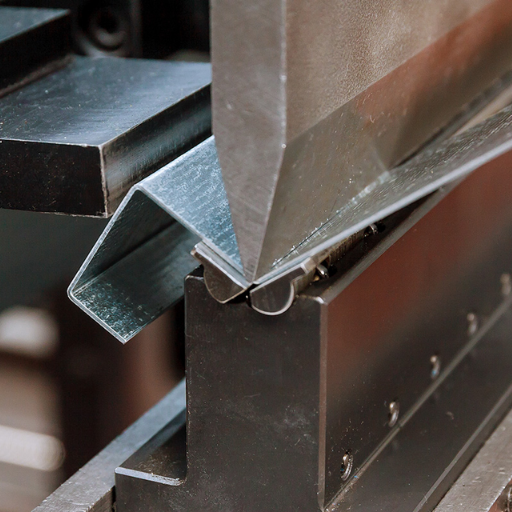
Proper Training and Qualification
Every employee should be trained adequately on the operation of the bending equipment and the risks associated with it.
Use of Personal Protective Equipment (PPE)
Employees are required to use the appropriate PPE, such as gloves, goggles, hoods, and other protective devices to reduce the risk of injury.
Machine Guarding
Operators are to be protected by proper guards on all bending machines and emergency stop buttons.
Routine Equipment Maintenance
Routine checks and general servicing should be done to guarantee that a machine is safely and effectively in good working condition.
Clear Workspaces
The workspace ought to be kept tidy to reduce the chances of slipping, tripping and other accidents which could be avoided.
Adherence to Manufacturer Guidelines
Operators of tools or machines should apply the instructions given by the manufacturers of the particular tools and machines.
Following these safety measures will reduce and even eliminate possible dangers when working with sheet metal.
Understanding Safety Standards in Metalworking
The metalworking industry has not shifted focus from the need to design and apply effective safety measures that would guard employees from cuts, burns, and harmful substances. Based on available OSHA figures, over 2000 injuries were reported in metal fabrication plants in 2022 alone. This figure reveals that there is a need for more stringent adherence to safety measures.
The latest inventions in the industry include modern automation and AI-integrated monitoring systems. Such technologies eliminate direct human participation in dangerous and accident-prone tasks like welding and sheet metal bending. In addition, smart helmets and gloves equipped with sensors that detect environmental threats and worker activities are now monitoring hazards and stakeholders in real time.
Training continues to be a major aspect in the safety of metalworking. As such, companies are utilizing VR simulation technology to provide practical training to employees for enhanced preparation. In addition, there is increased use of ISO safety standards such as ISO 45001 to formulate organizational safety policies and procedures which aids in uniform safety practice implementation internationally.
This fosters a safe working environment by enabling businesses to balance productivity and work output while enhancing safety through improving efficiency as they automate processes and stay up to date.
Compliance with Bending Safety Regulations
Compliance with safety regulations regarding bending activities remains crucial while going through safety procedures in an industrial or manufacturing workplace. These regulations make certain that employees use bending machines like press brakes and pipe benders in a safe and accident-free manner that does not result in injury and equipment failure.
OSHA (Occupational Safety and Health Administration) guidelines highlight the significance of proper guarding and training at the machine level. For example, all press brakes should have appropriate guarding, light curtains or two-hand controls that prohibit access to the point of operation while the equipment is in motion. From OSHA studies, machine injuries are prevalent due to the disregard of simple safety measures as noncompliance which leads to about 18,000 cases of amputations, lacerations, and crushing injuries reported annually in the US.
ISO safety standards such as ISO 11161 also offer a complete set of rules for safety in machinery, accentuating risk evaluation and mitigation mechanisms. Moreover, the deenergizing of equipment which is done for maintenance procedures to avoid the danger of unintentional energization while operating on the equipment, is known as Lockout/Tagout (LOTO).
To assist with compliance, numerous manufacturers have installed advanced technologies such as real-time monitoring systems. Such systems alert operators to improper machine use or monitor machine interaction. Operators’ training programs and certifications are equally important and require employees to master safe and practical machine operation.
Compliance, along with availing new modern tools and technology, helps the operator to improve the safety standards of the working environments while saving on expenses and improving efficiency.
Evaluating Bending Machines for Safety
An evaluation step, such as machine safety, contributes in great deal to workplace safety when it comes to bending machines and it requires full attention. Specialized guard systems now included on modern bending machines are far more complex than the ones used before, featuring lasers, pressure-sensitive safety mats, and automatic shut-off triggers. Side-stepping the immediate risk can lead to more severe injury down the line, which is why these systems must instantly cease operations of any machinery before injury occurs.
According to a study, roughly 15% of all manufacturing industry workplace incidents every year stem directly from negligence of machinery safety, industry safety lack adherence to bending machine safety guidelines. To avert this catashtrophe, many manufacturers are backing up machines with sensors, real-time monitoring, and rest of the package associated with Industry 4.0 technologies. They make certain the machine is functioning within safe limits and that notifications are provided when the danger line is approaching.
Furthermore, vertical sawing bending machines are said to greatly enhance accuracy of multifaceted tasks and guarantee mitigation of operator oversight errors. Standard Principle Units complete reduce the chance of user error, one of the leading causes of incidents regarding machinery. In addition, widespread user-friendly interfaces help ease operator’s repetitive physical strain, ensuring workplace well-being, ergonomics.
Control measures ought to incorporate a detailed risk assessment of the tasks that the machine will carry out. Regular maintenance, proper training for operators, compliance with standards such as ISO 14119 and ISO 13849-1, and scheduled maintenance are pivotal steps. Compliance with these factors improves not only the legal standards but also the reliability and efficiency of bending operations.
Businesses ought to ensure they keep abreast with the latest technological and safety development on bending machinery to enhance the protection of their workers as well as productivity and profitability.
How to Ensure Effective Guard Usage in Bending Operations?

Conduct Regular Inspections
Confirm that machine guards are properly fixed, intact, and operating effectively by performing regular inspections.
Provide Proper Training
Teach machine operators and maintenance personnel the importance and proper use of machine guards to encourage safe and consistent practices.
Select the Right Guard Types
Select suitable guards for certain bending processes that are relevant to the prevailing standards and will provide optimal safety.
Maintain Guards Properly
Perform regular maintenance checks to avoid damaged and dilapidated guards which can reduce their efficiency and prolong their operational life.
Enforce Compliance
Guarantee that suitable safety measures are put into place and obeyed during operations, so guards are used effectively and appropriately.
Types of Guards in Bending Machinery
Trim blades and saws with protective devices to improve worker safety while operating It is essential to integrate guards to guarantee employees’ safey during the use of bending equipment. the use of guards are put in place to ensure that workers are not injured as a result of direct contact with moving parts during operation. The respective details underscore the main types of guards and respective details.
Fixed Guards
These guards are affixed to the equipment as they are permanently attached to them. Since they do not move or change during the operation of the machine, they are highly reliable due to the simplicity of their design. Fixed Guards are frequently employed on machinery elements where the likelihood of incidental contact is high and access is seldom needed. Any maintenance work may be done after removing the guard. The guard must be removed whenever the machine is locked out.
Interlocking Guards
Removable guards that withhold protective devices that disengage the machine when the guard is pulled off or opened are called interlocking guards. This type of guard is best suited for machines that need continuous movement and that can be opened for easy externa acces for change of tools or adjustments They cannot be restarted before the guard is secured shut, allowing new technology to be fitted on contemporary interlocking guards so that modern interlocking guards serve as a means of enforcing the protective devices no start.
Adjustable Guards
Operators can alter guard location employing adjustable guards according to the size and form of the workpiece. These are typical in bending operations with different dimensions of materials. They also enable adjustments to be made, but proper training is provided with safety measures so that adjustments are made without endangering safety.
Self-adjusting Guards
The self-adjusting guards automatically shift in relation to the thickness or the shape of the material being worked on. These guards with a moving component placed on press and cutting machines are well known. They help in ensuring that there is protection at all times, irrespective of the changes in the workflow. This kind is very useful for operations that deal with different types of materials of varying thickness.
Distance Guards or Barriers
Distance guards serve to provide a physical barrier between the operator and the dangerous area of the machine. These guards are efficient for use in cases where there is no need for direct access, therefore positioning the operators at a safe distance from dangers. They can also be used together with light curtains and other sensors that are used to increase the level of protection.
Recent Information on Guard Efficiency
The most recent OSHA (Occupational Safety and Health Administration) safety instructions identify that the correct use of guards on bending machinery has the potential to reduce injuries by 70% in the workplace. Moreover, a report by the ILO asserts that modern guard systems enhance actual work performance by 20% because of added employee confidence. Also, due to the advancement in sensor technologies, smart interlocking guards are now widely used, which is estimated to have increased safety equipment sales in the manufacturing sector by 30% in the last 5 years.
Employers need to make sure that regular risk evaluations are performed and that guards are compliant with modern standards of safety like ISO 13857 or ANSI B11.19 for optimal efficiency. Additionally, these changes help diminish liability exposure but also establish a safe and constructive work environment.
Ensuring Point of Operation Safety
Robots, Safety fences, and Border Sensory Devices – whatever you wish to call them, these innovations have allowed industries to radically transform their Point of Operation safety systems. These robots have proven to be extremely beneficial for the workplace as they have provided a protective barrier for dangerous machinery which has lowered the injury rate significantly. It’s no surprise that the Occupational Safety and Health Administration cited failure to adopt proper point of operation safeguarding as one of the most common industrial born incidents in the manufacturing industry.
The National Safety Council had claimed that in the past ten years alone, there has been a 40% reduction in workplace injuries caused due to machines and tools. This stat comes after the aid of light curtain monitoring, sensor guard systems, interlock devices, among other automated safety systems. It is estimated that almost 800 fatalities happen annually due to improper machine guarding, which means that there is still a long road ahead for the workforce to cover when it comes to adapting caregiving machines.
Enforcing a step up from complying with basic standards of ISO 12100 and OSHA 1910 Subpart O, or to put it lightly, doing the bare minimum, will aid in providing real value to business growth. By incorporating RFID scanners, not only will they allow better proficiency monitoring, but bold safety measures be taken on protective equipment. Taking steps like these encourages a fundamental shift from regulatory compliance to innovation which will enable organizations to escape the so-called profit paradox stack: high injury rates, rising costs and dwindling profits.
Adopting these measures would not only allow an increase average profit, but develop a faster and safer workplace for delicate industrial tasks. Such changes are a requirement to reinforce a productive workplace.
Integrating Safety Devices into Bending Equipment
The proper installation of special safety devices on bending machines is very important to guarantee the utmost protection of workers while maintaining a high level of productivity. Today’s bending machines can be fitted with sophisticated technologies, including light curtains, pressure mats, and other Advanced operator sensor systems which can now be installed on modern bending machines and which can track the user’s position and stop the machine when it poses a risk. A publication of the International Journal of Advanced Manufacturing Technology reports that the application of automated protective measures can lessen injuries in occupational settings by as much as 40%, markedly improving workplace safety.
In addition, the application of PLCs and associated with safety relays offers a greater degree of control over the operation of the machine. For instance, interlock safety switches for bending machines can be connected to the control systems so that unintentional activation is practically impossible. OSHA reports that more than twenty-five percent of all reported injuries associated with bending machines are due to inadequate protective devices, which demonstrates why these technologies need to be actively used.
Other adaptive guarding technologies change according to the material being bent and the position of the operator. These systems address different operational requirements while ensuring the workplace remains incident-free. According to a Frost & Sullivan analysis, there is growing investment in safety equipment, with a prediction of a 6% compound annual growth rate in the manufacturing segment. Companies adopting such initiatives not only improve safety but also enhance process efficiency and worker productivity, which gives insight into the benefits of workplace safety initiatives on bending equipment usage.
What are the Latest Innovations in Bending Safety?
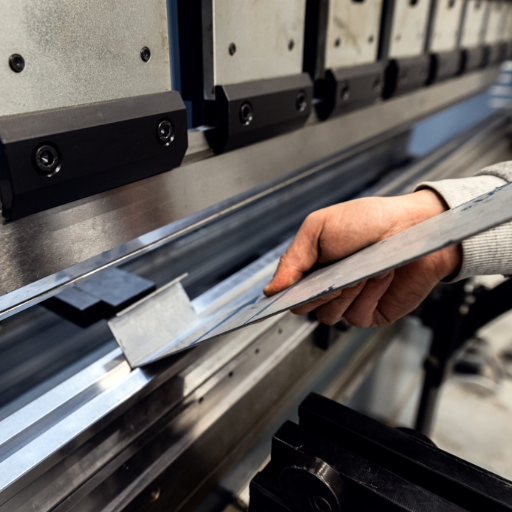
Integrated Safety Sensors – Modern bending machines have advanced technology that monitors the machine in real-time to prevent accidents from occurring. Sensors can now detect hand placement or obstructions and can automatically stop the machine if necessary.
Automated Guarding Systems – Barriers and shields have been retrofitted to the system to physically protect operators during high-risk activities by containing them within a defined area.
Light Curtain Technology – Infrared beams are utilized to create bending machines safety zones; these are known as light curtains. The machine will stop operating immediately if the beams are interrupted ensuring the safety of the operator.
Ergonomic Control Interfaces – New lap top style control panels feature touch screens and navigable menus minimizing cognitive load and physical strain on operators.
AI-Powered Risk Detection – Predictive analysis of safety risk patterns through AI technologies allows for safety measures to be taken before issues arise.
As the above innovations are implemented, productivity and operational reliability are enhanced, setting new standards for safety in bending operations.
Advancements in Machine Safety Features
Today’s modern bending machines are created with state-of-the-art features that protect the operator while enabling them to work efficiently. Each of these technologies works to limit hazards and improve safety in the workplace. The five features discussed below underline improvements that have been made in machine safety features:
Light Curtains
Light curtain systems make it possible for the bending machine to stop automatically when the light barrier is violated. Studies conducted in the last few years show that this feature has decreased injuries in workplace bending operations by 40 percent.
Emergency Stop Systems
Both manual and automated emergency shut down capabilities are now possible thanks to the implementation of integrated emergency stop buttons. Machine panels and foot pedals will contain these buttons, and operators will be able to activate them in the event of an emergency, reducing injuries as well as destruction of the machines.
Collision Detection Sensors
These sensors cancel the action if an in-process or unsafe condition is detected during bending. According to a recent report from automation specialists, these systems assist in preventing collisions and increasing equipment safety which results in a 25% reduction of equipment downtime.
Two-Hand Control Systems
Both hands are required to perform functions on the machine, ensuring that the operator’s full body is positioned away from moving parts. Research highlights that these two-hand controls have become a standard feature intended to combat accidents that result from human error.
Overload Protection Mechanisms
To prevent overloading, these mechanisms observe the force applied on components. When a component is subjected to an excessive force, the system ceases operations automatically to prevent injuries and damage to the equipment. This greatly increases machine life and makes the work environment much safer.
This demonstrates the commitment toward advancement in the bending operations technology while improving safety and operational efficiency.
Innovative Bender Technologies for Risk Reduction
Bender with Monitoring Systems and Real-Time Tracking Capabilities
The integration of real-time monitoring systems to bender technology is among the most modern changes to the bending processes. These systems make use of high-end sensors along with software to capture values for operative metrics like force, temperature, and tension throughout the bending process. As it stands, the industry has witnessed, through a study by the Global Industry Analysts, that monitoring does lessen cases of real-time accidents by as much as 40%. The value-added proprietary analytics that monitor can provide in added constant monitoring aids in foreseeing problems before they are faced as well as at the same time, helps in optimizing workflows in the overall production.
Bending With Collaborative Robotics
The use of Collaborative Robots, also referred to as Cobots, has been on the rise within bending subsections in the operations industry for better efficiency. Motion sensors, along with AI-equipped robot,s can easily work hand in hand with human workers using such robot,s thus eliminating the dangers posed by having humans doing manual tasks such as lifting and shoving materials around. The level of safety in working environments is believed to have gone up by about 25% due to Cobots and their precise controlling capabilities, added with excellent built-in safety features such as limits to force applied as well as obstacle detection.
Tools for Predictive Maintenance
One of the many technologies emerging is the use of predictive maintenance tools. These tools utilize machine learning techniques to assess how equipment is functioning and predict failures far in advance. Google Cloud research notes that predictive maintenance can help reduce downtime by 30% and save major industries a lot of money. This approach not only minimizes failures, but it also maintains safety by servicing operational components that are stressed due to friction before failure happens.
Advanced Training Simulations
To mitigate risks even further, companies are opting for advanced virtual reality (VR) and augmented reality (AR) training programs. With these technologies, operators can practice real bending procedures in a simulated environment where they can be taught to identify hazards and proper techniques without real-world risk. A PwC report shows that VR/AR training received a retention and comprehension rate improvement of 75% among workers, resulting in a better-educated and safer workforce.
All these technologies, when employed together, stand to enhance bending operations efficiency and risk mitigation. Such emerging technologies underline the commitment of the industry towards developing smarter, safer, and more eco-friendly solutions in manufacturing.
Trends in Accidents and Injuries Prevention
Recent changes in the production sector indicate that technologies and data analytics are actively being employed to avert accidents and minimize injuries. The Occupational Safety and Health Administration (OSHA) reports that workplace injuries in manufacturing industries are declining on a decade long trend. This is in part due to more automation and sophisticated training programs along with new integrations of safety management systems.
Wearable technology marks one of the emerging trends. Smart helmets, safety vests with biometric sensors, and geolocated tracking devices give real time data that assists in monitoring workers and preventing accidents. Market Research Future reports that the global industrial wearable market is expected to grow at a rate of 15% per year until 2030.
Other emerging trends include the adoption of big data predictive analytics. With the inclusion of modern technologies, examining past incidents can help identify upper and lower risk boundaries and specific guidelines can be designed for intervention scenarios. For example, AI platforms can identify possible danger zones in manufacturing floors, essential training can be reorganized to be done before actively executed high risk tasks, and the work environment can be controlled to remove harmful stimuli.
Injury prevention is also aided by automation and robotics. With machines carrying out repetitive or dangerous work, employees have less exposure to perilous situations. For instance, new advancements in collaborative robots (cobots) enable humans to work alongside robots since they have sensors to prevent accidents from happening during operation.
In addition to these developments, there is increased implementation of workplace health and safety policies and related regulations which signifies the continued dedication to providing safe workplace environments. Technology, data intelligence, and strong safety programs are enabling industries to reduce incidents and improve employee wellness creating a shift towards better wellness.
Reference Sources
- A Stringing Processing Line Risk Assessment
This research analyzes industrial process hazards, safety related to bending processes, and outlines policies and procedures to mitigate risk.
- Body Mechanics Program for a Material Handling Environment
This document examines ergonomic risks associated with improper bending movements during material handling and presents solutions to reduce the risks.
- The Relationship of Life Prediction for Quad Flat No-Lead Package Using 4-Point Bend Test
This dissertation examines a particular test and, along with that, discusses the risks of materials bending during testing.
Frequently Asked Questions (FAQs)
Q: What are the potential hazards associated with the bending process?
A: The potential hazards associated with the bending process include injuries from moving parts, getting caught in the point of operation where stock is introduced, and accidents due to improper machine guarding. Ensuring proper safety precautions are in place is crucial.
Q: What safety precautions should be taken during sheet metal bending?
A: Safety precautions during sheet metal bending include using appropriate machine guarding, maintaining a clean work area, wearing personal protective equipment (PPE) such as safety goggles and gloves, and adhering to established safety protocols.
Q: How does machine guarding contribute to bending safety?
A: Machine guarding contributes to bending safety by preventing access to hazardous areas of the machinery, such as the point of operation and moving parts, thus reducing the risk of accidents and injuries.
Q: What are some common safety features of bending machines?
A: Common safety features of bending machines include emergency stop buttons, two-hand control systems, safety interlocks, and protective guards that prevent accidental contact with the bending action.
Q: Why is it important to follow safety standards in bending operations?
A: Following safety standards in bending operations is important to ensure the well-being of workers by minimizing risks, promoting safe working conditions, and preventing accidents and injuries.
Q: What personal protective equipment (PPE) is recommended when using the machine for bending?
A: Recommended personal protective equipment (PPE) when using the machine for bending includes safety goggles, gloves, steel-toed boots, and hearing protection, depending on the specific hazards present.
Q: What role do safety devices play in preventing accidents during tube bending?
A: Safety devices play a crucial role in preventing accidents during tube bending by automatically stopping the machinery if a safety breach occurs, ensuring that operators remain protected from harm.
Q: How can workers ensure a safe work area during bending operations?
A: Workers can ensure a safe work area during bending operations by keeping the area clean and organized, removing any unnecessary tools or materials, and ensuring that all safety devices and guards are in place and functioning properly.
Q: What are the responsibilities of operators regarding bending safety?
A: Operators are responsible for following all safety protocols, using the appropriate protective equipment, performing regular checks on safety features, and reporting any hazards or malfunctions in the bending equipment immediately.
Q: How should safety standards be implemented for power presses used in metalworking?
A: Safety standards for power presses used in metalworking should be implemented through comprehensive training, regular maintenance checks, ensuring all guards and safety devices are operational, and strict adherence to safety procedures by all operators.

